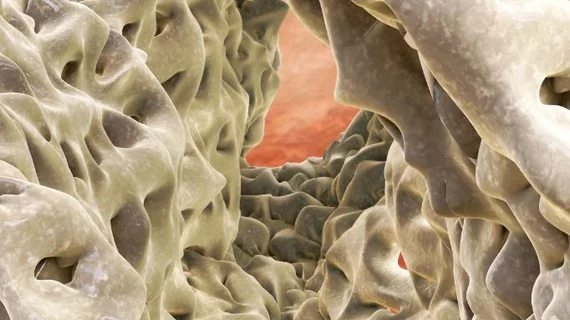A team of Baltimore-based researchers are using a new color imaging technique to find tiny microfractures in bones previously considered to be invisible using traditional modalities.
X-ray is often used to see dense materials such as bones, but such technology can’t image tiny structures like microcracks. The researchers used a color x-ray scanner developed by researchers from New Zealand, along with novel nanoparticles, to produce a clear image of where such cracks are located.
While the technique was not used on human patients, the researchers believe the color imaging scanner could become a powerful tool for radiologists.
The MARS spectral x-ray scanner is a CT machine that uses x-rays—also called spectral CT—and a camera with pixels about 10 times smaller than traditional ones. It was developed by a father-and-son team and used to image its first human subject in July 2018.
Researchers at the University of Maryland, Baltimore County, and University of Baltimore created hafnium-based nanoparticles they call “GPS particles” that travel and attach to areas in the bone where microcracks exist. Hafnium is an element that is detectable by x-ray and shown to be stable enough to be used in living beings, then dispelled safely from the body.
Once attached, the particles don’t let go, first author Fatemeh Ostadhossein, PhD, wrote Nov. 6 in Advanced Functional Materials. This enables the MARS scanner to produce a clear, color image of where bone microcracks are located.
Besides pinpointing microfractures, the researchers believe combining color spectral CT imaging with their hafnium particles could help detect more serious problems such as heart blockages.
"Regular CT does not have a soft-tissue contrast. It cannot tell you where your blood vessels are,” Ostadhossein explained in a statement. “Spectral CT can help solve that problem."

